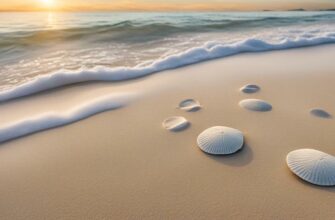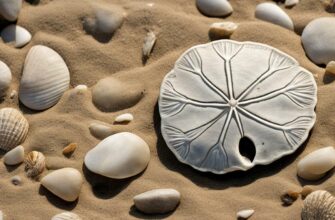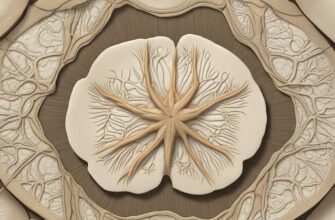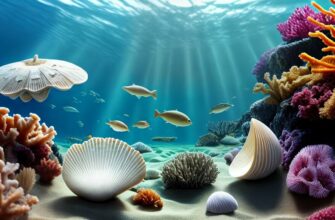If you’ve ever come across a sand dollar on the beach, you may have wondered if these curious critters can harm humans. The good news is, sand dollars are perfectly harmless and won’t hurt you.
In this article, we’ll dive into what sand dollars are, their anatomy, feeding habits, interactions with humans, and answer some common FAQs about them. Let’s get started!
- What are Sand Dollars?
- Anatomy of a Sand Dollar
- Can Sand Dollars Regenerate Lost Limbs?
- How Sand Dollars Feed
- Can Sand Dollars Bite?
- Interactions with Humans
- Are Sand Dollars Poisonous or Venomous?
- Handling Sand Dollars Properly
- FAQ about Sand Dollars
- Can sand dollars bite?
- Can sand dollars survive out of water?
- Are sand dollars useful in any way?
- Can sand dollars reproduce on their own?
- What do sand dollars eat?
- Can sand dollars harm humans?
- Can you keep sand dollars as pets?
- How can you tell if a sand dollar is alive or dead?
What are Sand Dollars?
Sand dollars are commonly found on beaches and in shallow ocean waters. They are a type of echinoderm, which means “spiny skin,” and are closely related to sea urchins and starfish. They are known for their distinct round, flat shape, which resembles a coin or a pancake. The sand dollar’s body is covered with tiny spines and a leathery skin, and it has a hard, calcified skeleton that gives it structure and protection.
Sand dollars are found in different colors, ranging from a dull greyish-brown to a vibrant blue or green. Their colors tend to fade after they have been washed ashore. Sand dollars live in groups, or colonies, on the ocean floor in shallow water. They are often found in large numbers, and are seen on beaches where the tide has retreated. In the next section, we will discuss the anatomy of a sand dollar and how they are able to survive in their natural habitat.
Anatomy of a Sand Dollar
Despite their name, sand dollars are not actually currency but rather a type of marine animal. They belong to the same family as sea urchins and are commonly found on sandy ocean floors. Their round, flat bodies are covered in a unique skeletal structure known as a test, which helps protect them from predators and the ocean’s currents.
The test consists of five distinct sections, which are visible on the top of the sand dollar. They are typically grey or brown in color and can range in size from just a few centimeters to several inches in diameter.
| Section of Sand Dollar Test | Name | Purpose |
|---|---|---|
| Periproct | Anal Opening | Allows for waste removal |
| Madreporite | Small, round hole | Serves as the entrance to the water vascular system |
| Petals | Five triangular sections | Helps with movement and respiration |
| Apical System | Top center | Controls the sand dollar’s tube feet and spines |
| Oral Surface | Bottom side | Contains the mouth and tube feet used for filter-feeding |
In addition to their skeletal structure, sand dollars also have specialized tube feet used for movement and feeding. These tube feet line the bottom of the sand dollar’s oral surface and are used to transfer food particles to the sand dollar’s mouth for consumption.
Can Sand Dollars Regenerate Lost Limbs?
Like many other echinoderms, sand dollars have the ability to regenerate lost limbs. However, this process can be slow and may not always result in a fully functional limb. In some cases, sand dollars may also develop abnormalities or deformities during the regeneration process.
How Sand Dollars Feed
Sand dollars are filter feeders, meaning they obtain their food by sifting small particles from the water around them. They have a unique feeding mechanism that sets them apart from other echinoderms.
Their mouth is located on the underside of their body, and is surrounded by five jaws that resemble tiny teeth. These jaws grind up food particles into small pieces, which are then transported to a second set of structures called the lantern. The lantern is a complex system of muscles and teeth that further breaks down the food and moves it through a series of grooves called petaloids. The petaloids are lined with small hair-like structures called cilia, which create a water current that carries the food particles towards the mouth.
| Feeding Process | Description |
|---|---|
| Filter feeding | Obtaining food by sifting small particles from the water around them. |
| Mouth and jaws | Their mouth is located on the underside of their body, surrounded by five tiny teeth-like jaws that grind up food particles. |
| The Lantern | A complex system of muscles and teeth that breaks down the food and moves it through a series of grooves called petaloids. |
| Petaloids | The grooves in the sand dollar’s body that contain small hair-like structures called cilia, which create a water current that carries the food particles towards the mouth. |
Sand dollars primarily feed on algae and other small aquatic organisms, such as plankton. They play an important role in maintaining the balance of marine ecosystems, as they help to control the growth and spread of algae.
Can Sand Dollars Bite?
No, sand dollars do not have the ability to bite or sting humans. Their tiny jaws are not strong enough to cause harm to human skin.
Interactions with Humans
Interacting with sand dollars is a popular beachcombing activity, and many people enjoy collecting them as souvenirs. While sand dollars may look delicate, they are actually quite hardy and can survive out of water for short periods of time.
However, it is important to handle them with care to avoid harming them or yourself. Sand dollars have sharp spines on their underside that can break off and cause injury. Additionally, excessive handling can stress or damage them, so it’s best to limit your handling and return live ones to the water.
It is also important to note that sand dollars are protected in certain areas. Some beaches have regulations against collecting them, so be sure to check with local authorities before taking any home. Remember, it’s always best to leave natural treasures in their natural habitat for others to enjoy.
Are Sand Dollars Poisonous or Venomous?
There is a common misconception that sand dollars are poisonous or venomous. However, this is not true. Sand dollars are completely harmless to humans and are not toxic in any way.
Sand dollars do not have any venomous spines or toxins that could cause harm if they come in contact with human skin. In fact, their bodies are covered in tiny spines called cilia that are used for movement and feeding.
It is important to note, though, that sand dollars are fragile creatures and should be handled with care. Excessive handling can cause their cilia or skeletals to break. If you do handle a sand dollar, be gentle and avoid touching their fragile spines.
It is also important to return live sand dollars to the water if you find them on the beach. Sand dollars are living creatures and require water to survive. Keeping them out of the water for too long can cause them to die, which can harm beach ecosystems.
In conclusion, sand dollars are not poisonous or venomous and pose no threat to humans. However, they should be handled with care and returned to the water to ensure their survival.
Handling Sand Dollars Properly
It’s important to handle sand dollars with care to avoid damaging them and to ensure the safety of both the creature and yourself.
Here are some guidelines for handling sand dollars properly:
- Firstly, avoid handling live sand dollars as much as possible. When you do need to pick one up, use a gentle touch and be cautious not to squeeze it too tightly. Sand dollars are fragile and can easily break.
- If you come across a live sand dollar on the beach, carefully return it to the water where it can continue to thrive.
- If you find a sand dollar that is no longer living, only pick it up by the edges to avoid damaging the intricate design on the surface.
- Avoid exposing sand dollars to direct sunlight or excessive heat, as this can cause them to dry out and lose their color.
- When transporting sand dollars, use a container with a lid to protect them from damage or exposure to other elements.
You can enjoy the beauty of sand dollars without causing harm by following these simple guidelines for handling them properly.
FAQ about Sand Dollars
Here are some frequently asked questions and answers about sand dollars:
Can sand dollars bite?
No, sand dollars cannot bite. Their mouth is located on the underside of their body, and they feed by filtering water for tiny particles and plankton.
Can sand dollars survive out of water?
Sand dollars are marine animals and require water to survive. If they are removed from the water for too long, they can die. If you find a live sand dollar while beachcombing, gently return it to the water as soon as possible.
Are sand dollars useful in any way?
Yes, sand dollars have an important ecological role in marine ecosystems. They help to maintain water quality by filtering tiny particles and plankton from the water, and their skeletons provide habitat for other organisms.
Can sand dollars reproduce on their own?
No, sand dollars require a mate to reproduce. They release their eggs and sperm into the water, where fertilization occurs.
What do sand dollars eat?
Sand dollars are filter feeders, and they eat tiny particles and plankton that they filter from the water using their tube feet.
Can sand dollars harm humans?
No, sand dollars are harmless to humans. They do not have any venomous or poisonous properties, and their hard skeletons are not sharp enough to cause injury.
Can you keep sand dollars as pets?
No, it is not recommended to keep sand dollars as pets. They are delicate marine animals that require specific living conditions and are best left in their natural habitat.
How can you tell if a sand dollar is alive or dead?
Live sand dollars have velvety fuzz on their test (the top of their body), while dead sand dollars are usually smooth and white. You can also gently touch the spines on the underside of the sand dollar to see if it responds.









